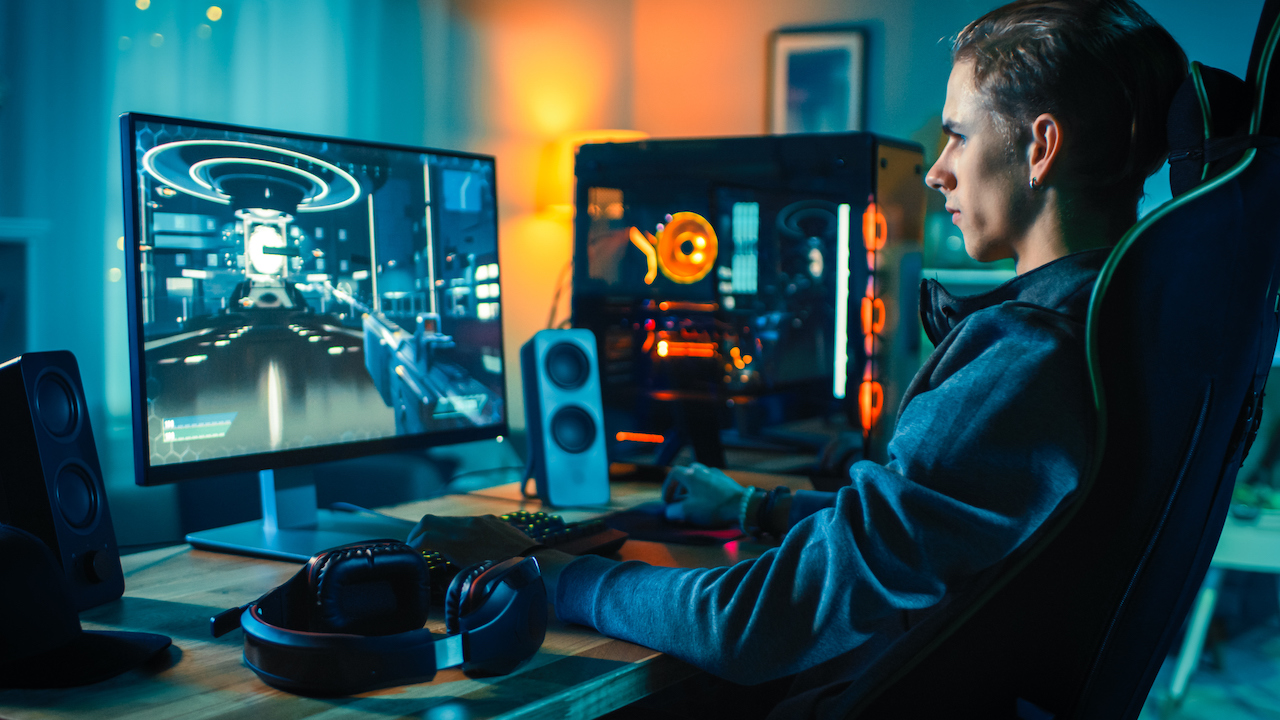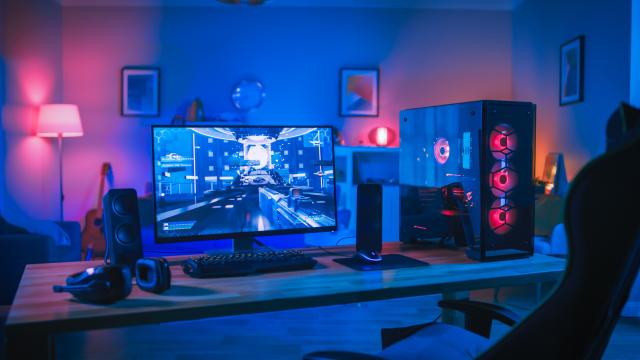It’s true you can spend an awful lot of money on getting a gaming rig together that combines the very best cutting-edge GPU, processors, storage and memory, not to mention monitors, keyboards, game controllers and more. If your budget knows no limits, go nuts and buy me one of each while you’re at it, but in the world most of us occupy, there are serious limitations on what you can afford when building a gaming PC. All those other pesky real-world needs like food and rent seriously cut into your hardware budget.
The good news is you don’t have to spend an absolute fortune to get a quite capable gaming rig, especially if you plan out your purchases and make the most of your buying dollar. It’s even feasible to build up a quite capable VR-ready rig for around $1,200, though you’re likely to hit a few visual limits that those on higher budgets will sail past.
So what should you consider when trying to build a more budget-centric gaming PC?
This article has been updated since its original publication.
[related_content first=”1710685″]
Patience is your best friend
If there’s one tip to keep in mind, it’s this: don’t buy everything all at once. Waiting around for parts to drop in price helps you to economise not once, but twice. Over time, component prices drop, so you win there, but being patient also allows you to take advantage of spot sales for just about every part you might need. You can always safely store away that bargain CPU you scored while you wait for your GPU of choice to dip in price.
Consider upgrade paths
It’s trickier when you’re buying budget parts, where older motherboards might not support future processors quite as well, but one of the joys of building your own gaming PC – beyond the challenge itself – is that you can then provide it upgrades in the future to keep it ticking along. That’s as long as your system can take those upgrades, so check motherboard and processor roadmaps carefully before making your buying choices. AMD is typically a little friendlier to the budget buyer in this regard than Intel.
Intel or AMD?
This may come down to what you can get at the right price when you’re clicking on that online checkout button, but typically speaking AMD has served the budget market a little better with its Ryzen processor lines than Intel’s Core equivalents, which tend to be pricier. On the other hand, Intel’s CPUs often overclock and perform better for gaming tasks at the top end. It’s a balancing act with both firms competing for gamer dollars.
SSD over Mechanical drives
We’ve pretty seriously switched in terms of price and performance for gamer needs towards SSDs, although it can be tempting to opt for a cheaper mechanical hard drive. If you do plan on having lots of games installed at any one time because you adore staring at your pile of shame or something, then the higher capacities you can score for the same money with a mechanical drive can be tempting. However, that’s going to incur a really serious performance penalty on your whole system, which is a price that most gamers aren’t going to want to pay.
Use what you’ve got, but be smart
Unless you’re absolutely brand-spanking new to the PC gaming scene, chances are that you’re upgrading from an existing PC. In that case, the temptation to use existing components that you already own to save money can be strong. It’s not a bad move either if you’ve got, for example a desktop case going begging. That’s money saved right there… with some caveats. Bear in mind that an older desktop might not have a power supply unit capable of powering your new setup appropriately, or it may just be on its last legs.
If it’s a mass-produced brand-name computer case, it may have an unusual or outdated rear panel setup which may not fit your choice of motherboard appropriately for the rear ports you’re going to want. For peripherals, you can always make do with existing mice, keyboards and controllers if you’ve got them, or budget for future upgrades, but there’s less reason to hold onto an older monitor, especially if it’s not capable of supporting modern refresh rates. Pairing up an old monitor and a new gaming computer is going to rob you of the precise benefits that you’re paying for!
Don’t forget to budget for the OS!
Sure, Steam has Linux support, but it’s a smaller subset of available titles, and the same is true on the Mac side of the equation. With macOS going all ARM with macOS Big Sur, the market for Hackintoshes is likely to dry up very quickly. That means that Windows 10 is your OS of choice, and if you’re building a new PC, you’ve got to factor in the cost of that OS licence. There’s nothing specifically illicit about using an OEM copy, typically much cheaper when bundled with hardware components that you’re buying anyway, but Microsoft does tend to be more restrictive when you do upgrades on home-built systems around those licences.

Example Build: Total Cost: ~$1,200
Any listed build is going to date over time, but as an example of what you could build up for a moderate price, here’s a decently specified gaming computer for under $1,200 at the time of writing. I’m only listing out the desktop case components, so you’ll need to budget extra for operating system, monitor and peripherals of course.
Amidst coronavirus it’s also a reality that some parts are easier to get than others, and you may have to wait a while for anything on back order.
CPU: AMD Ryzen 5 3600 ~$295
If you’re building your gaming PC to a budget, you’re not looking at top-tier CPUs, but you can get a decent quantity of power for not that much money these days. The 6-core AMD Ryzen 5 3600 is a good choice for budget buyers, and it’s pretty easily available for just under $300 if you’re willing to shop around.
If you want something a bit cheaper with decent performance, the AMD Ryzen 5 2600 or AMD Ryzen 3 3100 should do your gaming computer some good.
GPU: MSI Radeon RX580 ARMOR 8G ~$340
You can save a few bucks by opting for a graphics card with less than 8GB of RAM, but you really shouldn’t if you want your new gaming system to have any kind of lasting power. The Radeon RX580 is a solid choice at a decent price and a good match with that AMD CPU.
We do have some bad news, however. Due to a global parts shortage, getting your hands on a GPU isn’t exactly the easiest or cheapest thing to do at the moment. If you can find a decent GPU for a normal enough price, hold onto it for dear life.
Motherboard: MSI B450 Gaming Plus ~$140
You can get cheaper AM4 socket motherboards, and it does depend on precisely how you’re going to configure it internally, but the MSI B450 Gaming Plus is well regarded in terms of value for money with support for memory speeds up to DDR4-3466, SLI/Crossfire compatibility and M.2 support for quicker SSD compatibility.
Memory: 16GB DDR4-3000 (or better) ~$150
Memory prices fluctuate a lot, and there’s a lot of good quality brands to consider, but what we’re looking for here is good quality DDR4 memory with a decent speed rating so that you’re not creating a memory bottleneck for either your CPU or GPU. If budget or specials allow, jumping up to 32GB would be even nicer for a gaming PC, but 16GB is a good bedrock place to start.
If you want a recommendation, Corsair’s Vengeance LPX isn’t a bad pick.
Storage: 512GB M.2 NVMe SSD ~$150
Picking up an M.2 NVMe SSD will maximise the speed of your primary drive, and 512GB gives you a little room to play with when you’re juggling game installs, although obviously if your funds permit dropping in a secondary larger storage drive of another type would be ideal. It’s well worth checking maximum transfer rates, however, as the pace at which SSDs are improving is quite rapid. That does create a balance between buying the fastest – which will cost you more – or saving a little on slightly older models.
If you’re on a tight budget, Sabrent’s 512GB Rocket SSD will keep you happy, and come in under $110. If you’ve got some extra cash to spare, bumping that Sabrent SSD up to 1TB or nabbing a Samsung 970 Pro SSD is a worthwhile investment.
Case: $50-$100
There’s no shortage of good gaming cases to house your new computer, with brands such as Corsair, Cooler Master, Thermaltake, Lian Li and plenty more besides all jostling for your case dollar. It can be tempting to go for that decked-out RGB look, but arguably that’s money better spent on other components. It’s certainly pretty easy to score a case for under $100 at any time of the year, and this is also a top pick for repurposing your old case too.
The Corsair Carbide SPEC-05 mid-tower case or the Cooler Master MasterBox Lite 5 ATX mid-tower case are both solid and affordable choices to house your gaming PC build.
PSU: $50-$100
Again, you’re awash with choices when it comes to getting those precious electrons to your new gaming computer; the key factor here is ensuring that your power supply can manage the power needs of the components you’re matching it up with. Again, you can repurpose existing gear here, but then you’re not only taking on matching up power needs but also possibly factoring an aged or worn-out PSU into the bargain.
I’d recommend checking out Cooler Master’s MWE 80Plus series – just make sure you’re buying one with the appropriate wattage.
